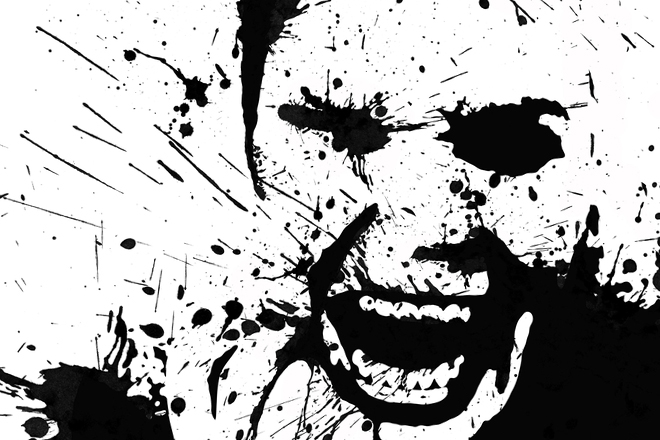Introduction
With the cast of characters introduced and listed on the dream program, attention can now be devoted to the unfolding of the play. Lines will be spoken, characters will move about the stage, and the plot will develop. The relative emphasis given to dialogue as contrasted with actions will depend upon the author of the dream and the message he or she wishes to express. A character's remarks may serve to insult, flatter, or "proposition" another character, or a character may act by assaulting, supporting, or seducing another character. These social interactions may occur between individual characters or sometimes groups of characters may be involved.
In treating the social interactions present in dreams, we code three classes: aggressive, friendly and sexual interactions. Coding procedures are identical for these three classes and the same notational system is also followed for some of the activities that will be discussed in the next section. This section will deal only with social interactions.
Aggressive Interactions
The first class of social interaction to be described is that of aggression. We code eight subclasses of aggression, which are numbered from 1 to 8. Those numbered from 1 to 4 involve various forms of non-physical aggression. Verbal remarks comprise the most frequent form of nonphysical aggression, although on occasion, expressive behavior may be used for the same purpose. Feelings of aggression which the character experiences but which do not reach any overt level of expression are also included within this grouping. The subclasses numbered from 5 to 8 involve various forms of physical aggression. Included are those acts where a character kills, hits, chases, or robs another character.
It should be noted that in all the subclasses that follow, except for Al, the situations involve a deliberate, intentional act on the part of one character to harm or annoy some other character. The classification of Misfortunes, which will be discussed in a later section, is used to handle those situations where injury, mishap, or adversity occurs to a character through chance or environmental circumstances over which it is impossible to exert personal control.
Subclasses of Aggressions
- A8: An aggressive act which results in the death of a character.
- "This dark stranger sprang at the blonde woman and HACKED HER TO PIECES with a big knife."
- "I SQUASHED the bug with my foot."
- A7: An aggressive act which involves an attempt to physically harm a character. The attempt may be carried out through personal assault or through use of a weapon. Threatening a character with a weapon is also included in this subclass.
- "I SLAPPED him in the face."
- "These two boys were THROWING STONES at each other."
- "He POINTED A GUN at me and told me to hurry up."
- A6: An aggressive act which involves a character being chased, captured, confined, or physically coerced into performing some act.
- "I kept trying to run faster but the gorilla was CATCHING UP with me.
- "The little baby had been KIDNAPPED by someone."
- "The police PUT the suspect IN JAIL."
- "HE HELD MY WRIST AND HE PULLED ME ALONG the street with him."
- A5: An aggressive act which involves the theft or destruction of possessions belonging to a character.
- "My room was all messed up and the TV WAS MISSING."
- "He SET FIRE to the farmer's barn."
- "She THREW her father's spectacles INTO THE LAKE."
- A4: An aggressive act in which a serious accusation or verbal threat of harm is made against a character.
- "This old lady kept SHOUTING THAT I WAS THE MAN THE POLICE WERE LOOKING FOR."
- "Jim told his boss that if he didn't stop, he was GOING TO PUNCH HIM ON THE NOSE."
- A3: This subclass covers all situations where there is an attempt by one character to reject, exploit, control, or verbally coerce another character. Such activity may be expressed through dismissals, demands, refusals, disobedience, or any other type of negativistic or deceitful behavior.
- "My boyfriend from back home sent me a letter saying that HE WASN'T GOING TO WRITE ME ANYMORE."
- "She TURNED HER BACK on her husband and WALKED OUT OF THE ROOM."
- "This fat lady INSISTED that the crying child finish all his supper."
- "My roommate's parents WOULDN'T ALLOW her to go to New York."
- "I found out that my brother HAD LIED ABOUT ME to my teacher."
- A2: Aggression displayed through verbal or expressive activity. Included are such activities as one character yelling or swearing at another or when a character criticizes or scowls at another.
- "I could hear the couple next door ARGUING."
- "My father SAID I WAS A LOUSY DRIVER."
- A1: Covert feeling of hostility or anger without any overt expression of aggression.
- "I KEPT GETTING MADDER AND MADDER at him but never said anything."
- "I FELT LIKE SPANKING my son but I didn't."
Terminology Employed for Aggressive Interactions
In order for an aggressive act to occur, some character usually initiates the activity and some character has this aggressive activity directed against him. The character who initiates the aggression is called the aggressor, and the person who is the recipient of the aggression is called the victim. If the victim responds with any type of counteraggression, it is called a reciprocated aggression. In those cases where no aggressor or victim can be clearly identified because the characters are engaging in the same aggressive activity at the same time, the interaction is called a mutual aggression.
It will be recalled that in the preceding section, the dreamer was not listed as a character because he or she is present in virtually every dream. The dreamer is coded (coding symbol: D), however, for interactions, because he or she is a participant in many of them. Aggressions in which the dreamer is not a participant are called witnessed aggressions. When a character aggresses against himself or herself, this is called a self-directed aggression.
Procedure for Coding Aggressive Interactions
In the examples given below, it will be seen that the coding symbol for the aggressor is written first. The type of aggression displayed by the aggressor is then indicated by placing the number of the appropriate subclass after the coding symbol for the aggressor. This is followed by a "sideward V" (>) pointing toward the coding symbol for the character who is the victim. Reciprocated aggressions are designated by placing the letter R after the aggressive subclass number rather than a sideward V. Mutual aggressions are indicated by an equal sign (=). If more than one character is involved, either as aggressor or victim, the coding symbols for the characters are joined by plus signs (+). Self-directed aggressions are denoted by placing an asterisk (*) after the number of the aggressive subclass.
| "I HIT my brother with all my might on the head." |
|
|
| "My girl friend SAID I WAS A TIGHTWAD." |
|
|
| "This fellow and I started to TRADE PUNCHES." |
|
|
| "This tough-looking guy started to TIE UP the policeman." |
|
|
| "The two boys... I should judge they were about 15... were CALLING EACH OTHER BAD NAMES." |
|
|
| "As I entered my bedroom, my mother who had been sweeping the floor and my sister who had been cleaning the woodwork suddenly took all my clothes out of the closet and began THROWING ALL MY CLOTHES OUT the window." |
|
|
| "This sinister-looking man LUNGED AT ME with a club in his hand so I KICKED HIM in the groin." |
|
|
| "I CALLED HER A SIMPLETON, and she GRABBED MY BLOUSE AND TORE IT." |
|
|
| "She told her husband she WAS GOING TO GET A DIVORCE. Then he grabbed a gun from the drawer and KILLED HER." |
|
| 1FUA |
3> |
1MUA |
| 1MUA |
8R |
1FUA |
|
| "I SAID that I WAS A LOUSY DANCER." |
|
|
| "The old man started to SLASH HIS OWN WRISTS." |
|
|
Coding Rules
- 1. It is considered an aggressive act even though the aggressor may be a sanctioned agent of punishment or professionally employed for such a purpose.
-
| "My nine-year-old cousin Tommy was BEING SPANKED BY HIS MOTHER." |
|
|
| "The POLICEMAN CAPTURED THE ITALIAN MOB LEADER." |
|
|
- 2. Criticism of a character's possessions is treated as criticism of the character himself.
-
| "My sorority sister said that MY NEW FORMAL LOOKED VERY UNATTRACTIVE." |
|
|
| "My 16-year-old brother Jack said MY CAR SHOULD BE IN A JUNK YARD." |
|
|
- 3. If the aggressor or the victim is unknown, use a Q to indicate this lack of identification.
-
| "The miners REFUSED to go to work." |
|
|
| "The company FIRED me." |
|
|
- 4. If there is a continued sequence of aggressive acts between the same aggressor and victim and these acts are identical as to the subclass of aggression involved, only one aggression is coded.
-
| "This big sailor PUSHED the little sailor, then began hitting him, and after he had knocked him down, he began to kick him." |
|
|
- 5. If more than one aggressive act takes place between the same aggressor and victim, code each aggression where a different subclass of aggressions occurs and indicate this linkage by placing a { mark in front of the linked aggressive interactions.
-
| "This wild-looking fellow came out of the alley and approached my boyfriend Sam and me. He CALLED SAM YELLOW, then he said he WAS GOING TO CALL HIS GANG TO TAKE CARE OF SAM. We didn't say or do anything, and then he TOOK A KNIFE AND STARTED TOWARD Sam." |
|
 |
1MSA |
2> |
1MKA |
| 1MSA |
4> |
1MKA |
| 1MSA |
7> |
1MKA |
|
- 6. When aggressive acts are separated in time through intervening events, code each aggression even if the same subclass of aggression is involved between the same aggressor and victim.
-
| "I RIPPED UP some of my husband's love letters from an old girl friend that were up in the attic but then thought about it and quit. I went downstairs and started to sew. After awhile I turned on TV but I kept thinking about the other letters so I went back up to the attic and RIPPED UP all the rest of them." |
|
|
- 7. Reciprocated aggressions are coded according to the same rules that are applied to initiated aggressions.


